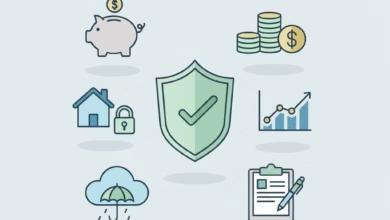
The joy of graduation can quickly be followed by the daunting reality of student loan payments. For millions of Americans, that monthly bill is a constant reminder of a debt that can feel like it will last a lifetime. But it doesn’t have to.
While there’s no magic wand to make student debt disappear, there are proven, actionable strategies you can implement right now to accelerate your repayment, save thousands of dollars in interest, and achieve financial freedom years ahead of schedule.
This guide isn’t about wishful thinking. It’s a detailed playbook designed to empower you. We’ll explore powerful repayment methods, show you how to find extra money you didn’t know you had, and break down complex options like refinancing. Your journey to being debt-free starts here.
Before You Attack Your Debt: Why a Full Loan Inventory is Your First Move

You can’t effectively fight an enemy you don’t understand. Before you make a single extra payment, you need to have a crystal-clear picture of your student loan situation. It’s time to become a detective and gather all the facts.
Create a master spreadsheet or document and for each individual loan, find the following information:
- Loan Servicer: Who do you pay each month? (e.g., Nelnet, MOHELA, SoFi)
- Loan Type: Is it a Federal loan (like a Direct Subsidized/Unsubsidized Loan or Grad PLUS) or a Private loan from a bank? This distinction is critical for your repayment options.
- Current Balance: How much do you owe on this specific loan?
- Interest Rate: This is the most important number. Note whether it’s fixed or variable.
- Minimum Monthly Payment: The absolute minimum you are required to pay.
- Repayment Term: How many years are you scheduled to be paying this loan?
Once you have this data, organize your loans from the highest interest rate to the lowest. The interest rate is the “cost” of your debt. The higher the rate, the more aggressive that loan is in costing you money over time through interest capitalization and daily accrual. Understanding this is the foundation of every effective pay-off strategy.
Which Repayment Strategy Will Save You the Most Money? Avalanche vs. Snowball
Once you’ve committed to paying more than the minimum, you have a choice to make. Where should that extra money go? Two primary methods dominate the world of debt repayment: the Debt Avalanche and the Debt Snowball.
The Debt Avalanche (The Mathematician’s Choice)
The Debt Avalanche method is the fastest and cheapest way to pay off debt, period. The math is undeniable.
- How it works: You continue to make the minimum payments on all your loans. You then take all your extra cash and apply it aggressively to the loan with the highest interest rate. Once that loan is paid off, you roll its payment (and all your extra cash) into the loan with the next-highest interest rate, creating an “avalanche” of payments.
- Pros: Saves you the most money in interest over the life of your loans. It’s the most financially efficient strategy.
- Cons: It can sometimes feel like a slow start. If your highest-interest loan also has a very large balance, it might take a long time to pay it off and get that first “win,” which can be discouraging for some.
The Debt Snowball (The Psychologist’s Choice)
The Debt Snowball method, popularized by Dave Ramsey, focuses on behavioral psychology and motivation.
- How it works: You make the minimum payments on all your loans. You then take all your extra cash and apply it aggressively to the loan with the smallest balance, regardless of its interest rate. Once that smallest loan is wiped out, you roll its payment into the next-smallest balance, creating a “snowball” effect.
- Pros: You get quick wins. Knocking out a small loan completely provides a powerful psychological boost and helps build momentum, making you more likely to stick with the plan.
- Cons: You will pay more in interest over time compared to the avalanche method because you’re leaving high-interest loans to grow for longer.
Which is right for you? If you are disciplined and motivated purely by numbers, the Debt Avalanche is superior. If you need those early victories to stay in the fight, the Debt Snowball is an incredibly effective tool. The best plan is the one you will actually stick with.
Unlocking Your Cash Flow: How to Find Extra Money for Loan Payments

“Pay more than the minimum” is great advice, but where does that extra money come from? It’s often hiding in plain sight.
1. Create a “Get-Real” Budget
You have to know where your money is going. Use an app (like YNAB or Mint) or a simple spreadsheet to track every dollar for a month. You will be amazed at what you find. Identify areas where you can cut back—daily coffee, subscription services you don’t use, excessive dining out—and reallocate that money directly to your student loan principal.
2. Make Bi-Weekly Payments
This is a clever trick that can make a big difference. Instead of making one full payment per month, split your monthly payment in half and pay that amount every two weeks. Because there are 52 weeks in a year, this results in 26 half-payments, which equals 13 full monthly payments. You’ve painlessly made one extra payment per year, which can shave months or even years off your repayment term. Important: Check with your loan servicer first to ensure the extra payments are being applied correctly to the principal.
3. Strategically Use Windfalls
Any unexpected or non-monthly income should be considered a weapon against your debt. This includes:
- Tax refunds
- Work bonuses
- Annual raises (apply the “new” money directly to your loans)
- Cash gifts
- Rebates or cashback rewards
It’s tempting to use this money for a vacation or a shopping spree, but using it to make a lump-sum payment on your highest-interest loan will pay dividends for your future self.
4. Increase Your Income with a Side Hustle
In today’s gig economy, there are endless ways to earn extra income. Driving for a rideshare service, freelance writing, pet sitting, managing social media for small businesses, or selling goods online can generate a few hundred extra dollars a month. If you can dedicate 100% of this side income to your student loans, you will supercharge your progress.
Should You Refinance Your Student Loans? A Guide to the Pros and Cons
Student loan refinancing is a powerful tool, but it’s not right for everyone. Refinancing is the process of taking out a new private loan with a new lender to pay off all of your old loans. The goal is to secure a new loan with a lower interest rate, a different repayment term, or both.
The Potential Benefits of Refinancing
- Lower Interest Rate: This is the number one reason to refinance. Lowering your interest rate, even by one or two percentage points, can save you thousands of dollars over the life of the loan and help you pay it off faster.
- Simplified Payments: You can consolidate multiple loans into a single monthly payment, making your finances easier to manage.
- Change Your Loan Term: You can choose a shorter term to pay the loan off faster or a longer term to lower your monthly payment (though this will cost you more in interest over time).
The Major Drawbacks: Giving Up Federal Loan Protections
This is the most critical part to understand. When you refinance federal student loans into a private loan, you permanently lose all federal protections associated with them. These protections are a vital safety net and include:
- Access to Income-Driven Repayment (IDR) plans (like SAVE, PAYE) that cap your monthly payment based on your income.
- Eligibility for federal student loan forgiveness programs, such as Public Service Loan Forgiveness (PSLF).
- Options for generous deferment and forbearance in times of unemployment or economic hardship.
Who is a Good Candidate for Refinancing?
Refinancing makes the most sense if you:
- Have a stable, high income and significant job security.
- Have a good to excellent credit score (typically 670+).
- Work in the private sector and will not be using programs like PSLF.
- Have high-interest private student loans (refinancing these is a no-brainer as they have no federal protections to lose).
- Have high-interest federal Grad PLUS loans.
Before you refinance, use online calculators to see how much you could potentially save and shop around with multiple lenders to get the best rate.
Could Your Boss Pay Off Your Loans? Exploring Employer Repayment Programs

A growing number of companies are offering Student Loan Repayment Assistance Programs (LRAPs) as a workplace benefit to attract and retain talent. These programs involve your employer making monthly or annual contributions directly to your student loan servicer on your behalf.
This is essentially free money that goes directly toward your loan principal. Check with your HR department to see if your company offers this benefit. If they don’t, it may be worth considering as a point of negotiation during your next performance review or when searching for a new job.
Frequently Asked Questions About Accelerating Student Loan Repayment
Q: Is it better to invest my extra money or use it to pay off student loans?
A: This is a classic debate. Mathematically, if your expected return on investment is higher than your student loan interest rate, you’d come out ahead by investing. However, paying off a loan provides a guaranteed, risk-free return equal to your interest rate. It also provides incredible peace of mind. For loans with interest rates above 5-6%, most financial advisors would suggest prioritizing the loan payoff.
Q: Will paying off my student loans early hurt my credit score?
A: It might cause a small, temporary dip. When you pay off an installment loan, the account is closed, which can slightly reduce the average age of your credit accounts. However, the long-term benefit of being debt-free and having a lower DTI ratio far outweighs this minor, temporary dip. Do not keep a loan just for your credit score.
Q: What’s the difference between federal consolidation and private refinancing?
A: Federal consolidation involves combining multiple federal loans into one new federal loan. Your new interest rate is a weighted average of your old rates, so it doesn’t save you money on interest. You retain all federal benefits. Private refinancing, as discussed above, creates a brand new private loan, ideally with a lower rate, but you forfeit all federal benefits.
The path to becoming student-loan-free requires a plan, discipline, and focus. By understanding your loans, choosing a smart strategy, and consistently putting in the work, you can reclaim your income and build the financial future you deserve.





